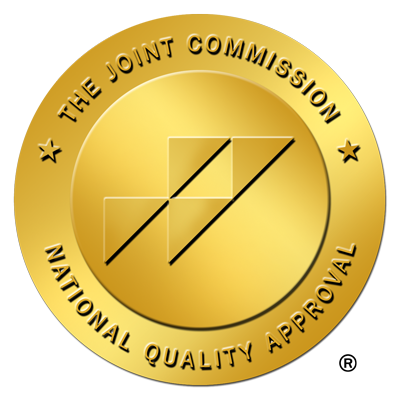When we’re young, most of us learn from the adults in our lives, including parents, teachers, and coaches, that discrimination is a negative habit because it leads to injustice and unfairness – kids are extremely sensitive to perceived fairness/unfairness – and a host of other problems, but we almost never hear about the impact of discrimination on mental health.
First, let’s make sure we’re on the same page when we use the word discrimination.
Here’s a general definition of discrimination from the Cambridge Dictionary:
“…the treatment of a person or particular group of people differently, in a way that is worse than the way people are usually treated.”
Here’s a more focused definition, provided by the American Psychological Association (APA). This describes the specific types of discrimination we’ll address in this article:
“Discrimination is the unfair or prejudicial treatment of people and groups based on characteristics such as race, gender, age, or sexual orientation.”
Research shows a strong association between discrimination and negative mental and physical health outcomes. The association is mediated by changes in the brain and body related to stress, including:
- Depression
- Anxiety
- Post-traumatic stress disorder
- General psychological distress
- Heart disease
- Hypertension
- Alcohol/substance use
- Poor sleep
- Inflammation
What we need to understand from previous research on the relationship between discrimination and health – physical and mental/psychological/emotional – is that discrimination acts a core determinant of inequity in our society and in our healthcare system. It affects the development, diagnosis, and treatment of illness, injury, and disease.
In this article, we’ll share the results of a study on the impact of discrimination of the mental health of college students. We’ll focus on how discrimination is associated with general psychological distress, social isolation, and suicidal ideation.
New Research: College Students, Discrimination, and Mental Health
In the publication “Center for Collegiate Mental Health: 2023 Annual Report (CCMH 2023),” researchers from Penn State University dedicated a chapter to an analysis of the impact of discrimination on the mental health of college students.
To determine whether a student experienced discrimination, they asked the following question to a total of 78,432 people in treatment at counseling centers at 85 university counseling centers between 2021 and 2023:
In the past 6 months, have you experienced discrimination or unfair treatment due to any of the following parts of your identity?
Disability, Gender, Nationality/Country of Origin,
Race/Ethnicity/Culture, Religion, Sexual Orientation.
The study authors clarify that discrimination is not a mental health issue. It’s a societal problem that needs to be addressed. Understanding the impact of discrimination on mental health, they assert, is essential for understanding how to best support and protect the mental health of people who experience discrimination.
The research team explored the following questions associated with the primary inquiry:
- Is discrimination associated with higher general distress, social isolation, and suicidal ideation?
- Compared to other clinical variables that are routinely gathered at the beginning of treatment, what’s the strength of the relationship between discrimination and mental health symptoms?
- Do students who experience discrimination experience improvement during college counseling services comparable to clients who do not report discrimination?
Researchers bases individual levels of distress, social isolation, and suicidal ideation on scores from a standardized psychological assessment tool called the Counseling Center Assessment of Psychological Symptoms (CCAP). This metric was developed by mental health experts at the University of Michigan in 2001 “…for the purpose of creating a high-quality, multidimensional assessment instrument that was low cost and clinically useful for college counseling centers.”
Colleges and universities nationwide collaborate with the CCMH and use the CCAP to assess and track student mental health in order to deliver essential support when needed, which makes it an appropriate tool for this study. It’s familiar, it’s accessible, and it’s accepted as a valid tool by mental health experts who focus on mental health among college students.
Let’s take a look at what they found.
Outcomes: Experiencing Discrimination
First, we’ll share the top-line results on the core topic: the experience of discrimination among college students.
Percentage of College Students Reporting Discrimination 2021-2023
- 80.2% of students reported no discrimination
- 11.4% of students reported at least one area of discrimination
- 8.4% of students reported two or more areas of discrimination
Next, the researchers compared levels of social isolation, psychological distress, and suicidal ideation associated with experiencing distress to levels of social isolation, psychological distress, and suicidal ideation associated with experiencing seven variables. The variable include previous counseling or therapy, previous substance use treatment, previous psychotropic medication, previous psychiatric hospitalization, history of trauma, history of non-suicidal self-injury, and history of suicide attempt/attempts.
Outcomes: Impact of Discrimination on Mental Health
This is the real core of the research. It addresses how the association of discrimination with the three primary psychological metrics compares to the association of discrimination with the seven variables identified above as measured by three primary psychological metrics.
In the data sets below, college students used a scale of 1-3, where 1 represents the lowest/least/absence of an item, and 3 represents the highest/most/presence of an item. To understand the information, think of it like this: in the first set, people who engaged in counseling or therapy answered an average of ‘1.9’ on the assessment tool, while people who experienced 2 areas of discrimination answered an average of ‘2.2.’ Therefore, we conclude that experiencing discrimination caused a similar level of distress as the factors that caused the individual to go to counseling or therapy.
For example, the information in this first set does not tell us that discrimination caused the need for therapy, but rather that people who go to therapy experience general distress at rates lower than those who experience discrimination.
General Distress: Impact of Discrimination
Scale of 1 (least) – 3 (most)
1 area of discrimination: 2.1
2 areas of discrimination: 2.2
Mean for all students in treatment: 1.85
(Overall mean includes data not reported in study)
- Counseling or therapy: 1.9
- Substance use treatment: 2.1
- Psychotropic medication: 2.2
- Psychiatric hospitalization: 2.2
- History of trauma: 2.2
- Previous non-suicidal self-injury: 2.3
- History of suicide attempt(s): 2.4
Notable findings: the experience of discrimination is associated with general distress at levels similar to the experience of past trauma, previous psychiatric hospitalization, receipt of psychotropic medication, and treatment for substance use.
Next, we’ll share the data on the impact of discrimination on social isolation vis a vis the seven psychological factors assessed by the research team.
Social Isolation: Impact of Discrimination
Scale of 1 (least) – 3 (most)
Mean for 1 area of discrimination: 2.3
2 areas of discrimination: 2.6
Mean for all students in treatment: 2.33
(Overall mean includes data not reported in study)
- Counseling or therapy: 2.3
- Substance use treatment 2.3
- Psychotropic medication: 2.3
- Psychiatric hospitalization: 2.6
- History of trauma: 2.4
- Previous non-suicidal self-injury: 2.5
- History of suicide attempt(s): 2.7
Notable findings: the experience of discrimination is associated with social isolation at levels similar to or higher than all the psychological metrics assessed, except for students reporting a history of attempted suicide.
Next, we’ll share the data on the impact of discrimination on suicidal ideation as compared to the seven psychological factors assessed by the research team.
Suicidal Ideation: Impact of Discrimination
Scale of 1 (least) – 3 (most)
Mean for 1 area of discrimination: 0.8
2 areas of discrimination: 1.1
Mean for all students in treatment: 0.74
(Overall mean includes data not reported in study)
- Counseling or therapy: 0.7
- Substance use treatment: 0.7
- Psychotropic medication: 0.8
- Psychiatric hospitalization: 1.2
- History of trauma: 0.9
- Previous non-suicidal self-injury: 1.3
- History of suicide attempt(s): 1.7
Notable findings: the experience of discrimination is associated with suicidal ideation at levels similar to or higher than all the psychological metrics assessed, except for students reporting previous non-suicidal self-injury or students reporting a history of attempted suicide.
Finally, we can report that students who engaged in therapy as a result of discrimination experienced improvements/reductions in distress, social isolation, and suicidal ideation at similar rates to students who engaged in treatment but had no experience of discrimination.
We’ll discuss these results below.
How Discrimination Harms Mental Health: It Starts With Increased Stress
The research available before this study shows associations between discrimination and increased negative physical, psychological, and emotional outcomes, with outcomes mediated primarily by the presence of elevated levels of stress.
In other words, discrimination causes stress and stress causes problems.
Those two successive claims appear to oversimplify the subject, but in reality, they’re both entirely accurate, evidence-based, verifiable, and describe the situation in a way that’s easy to understand. Anyone reading this article can use that simple sentence to characterize the impact of discrimination on mental health, and advocate for the ongoing presence of diversity programs in our various public and private institutions.
Here’s how the study authors describe the results of their research:
“The current findings highlight the critical role college counseling centers serve in supporting the Diversity, Equity, Inclusion, and Belonging (DEIB) goals that are a priority for many institutions.”
Programs that promote DEIB goals are the subject of intense debate and public scrutiny. This study demonstrates the value of DEIB programs that reduce discrimination on college campuses and in our society at large. It also shows that the experience of discrimination has a quantifiable negative impact on the mental health and wellbeing of college students. In addition, the study reveals another important fact. Engaging in therapy to manage the psychological and emotional consequences of discrimination can have a positive impact. It can reduce rates of distress, social isolation, and suicidal ideation.




